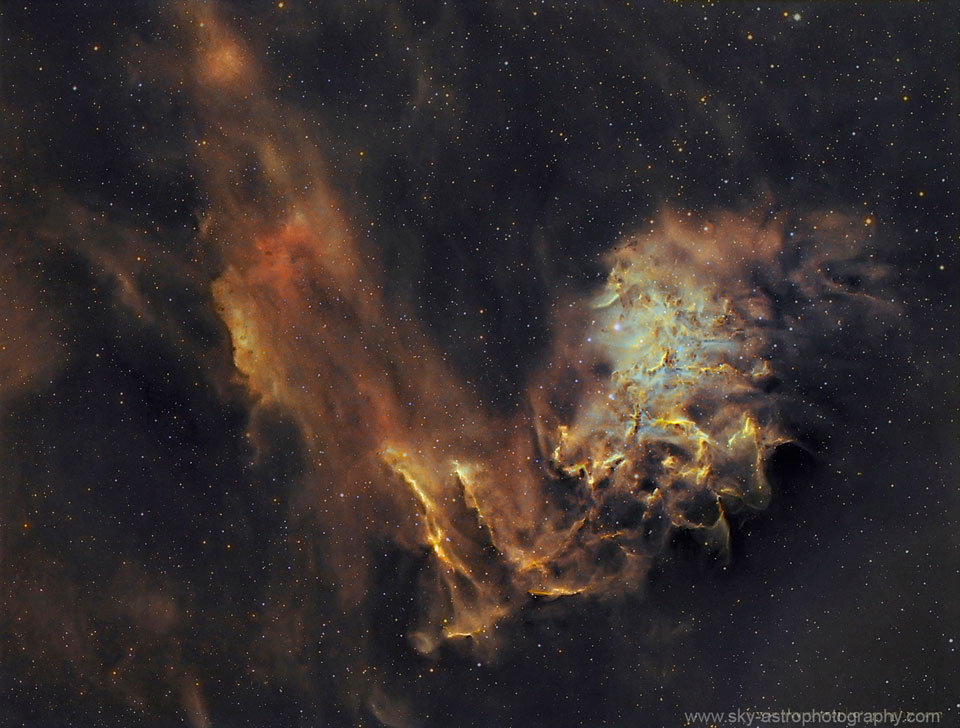If you've enjoyed this please share it on facebook, twitter, or your favourite social media.
The electrostatic space sail:
The Heliopause Electrostatic Rapid Transit System(HERTS)is a space drive that has been on the horizon for a while. In theory it's very simple: By unravelling long leads from the spacecraft, and giving them a powerful electric charge the engine can catch the solar wind - a gale of charged particles put out by the Sun. The thrust produced this way is fairly small it can build over time until the craft reaches speeds of hundreds of kilometres per second. Although this is till a fair way from actually being flown, this is an exciting idea that could let us take our first steps towards sending probes into interstellar space in a reasonable length of time..
Above: A quick run down on the HERTS concept, courtesy of the NASA advanced concepts office.
Hubble finds remains of our galaxy's first stars
The Hubble telescope has undertaken a CSI-sh mission, doing a forensic investigation of the 12 billion year old corpses of stars. When all but the biggest or smallest stars die they leave behind a remnant - mainly made out of the star's burned out core - called a white dwarf. Hubble has managed to track down the white dwarfs left behind by the very first generation of stars in our galaxy, in the galactic central bulge, which will have acted as records of what the first stars were like, and how the first stages of our galaxy's growth went. The Hubble survey also found slightly more low-mass stars in the bulge, compared to those in the galaxy's disk population. "This result suggests that the environment in the bulge may have been different than the one in the disk, resulting in a different star-formation mechanism," explained Annalisa Calamida of the Space Telescope Science Institute.
 |
| Above: Images from the Hubble survey, showing the white dwarf stars . Courtesy of NASA |
Why the Moon has fewer volatiles than Earth
Why does the Moon have fewer volatile compounds in its rocks - things like water - than the Earth? It's been known for years now that the Moon has more volatiles and organic molecules than we thought, locked away as ices in the permanent ultra cold of the lunar poles. But these are thought to have been introduced after the Moon formed, from comet strikes or by the solar wind. The Moon's rocks have far fewer of these kinds of compounds than we'd expect.
The best (although by no means perfect) theory for the Moon's formation is that it grew from the debris left behind when a Mars sized protoplanet collided with the young planet Earth. This would mean that the Moon formed from hot materials, which would have the volatiles baked out - but the volatiles would not have completely escaped the gravity of the Earth-Moon system, and should have eventually been re-absorbed by the growing Moon.
So where are they? Scientists at Southwest Research Institute combined dynamical, thermal, and chemical models of the Moon's formation to show that the volatiles would have indeed stuck around - only to be swallowed by the Earth instead.
"We find that the inner disk melt remains hot and volatile-poor as it accretes onto the Moon. Eventually the disk cools and volatiles condense. But by the time this occurs the Moon's accumulation from this inner disk region has essentially terminated," said said Dr. Robin Canup, lead author of the paper. "So the final materials the Moon accumulates are lacking in volatile elements, even in the absence of escape."
The authors suggest that the materials the Moon initially accumulates from the outer disk could be volatile-rich, followed by a final 100- to 500-kilometre layer of volatile-poor material. In that case, the Moon's volatile content could then increase with depth, depending on the extent of mixing in the Moon's interior.
The paper (pay to view) is here.
 |
| Above: An artists impression of volatiles frozen as ices in the permananet shadow of a polar valley. |
The Flaming Star Nebula
This isn't news as such - it's just a brilliant view of the Flaming Star nebula, taken by Jesús Vargas (Sky-Astrophotography) and Maritxu Poyal (Maritxu).
Why Andy Weir wouldn't go to Mars
The title link will take you to an interesting interview with Andy Weir ( author of 'The Martian') and Stephen Petranek, author of the TED Book, How We’ll Live on Mars. They are both surprisingly optimistic about the chances of seeing colonies on Mars one day, but Weir thinks it won't be something he does: “I write about brave people," he says,"I’m not one of them.”
 |
| Above: The Martian desert. Courtesy of NASA. |
Last ditch attempt to find Philae
A year ago the washing machine sized Philae lander made it's dramatic touchdown on the surface of comet 67-P. Although the little robot landed and managed to return around 60 hours of science data, the mission was cut short because the robot had come down in the shadow of a steep cliff, and was not getting enough sunlight for its solar panels to recharge it's batteries. Since then the controllers at ESA have heard intermittent contacts from the lander - and nothing for the last four months - but haven't been able to establish reliable enough contact to resume science operations. Now the ESA team are beginning their last efforts to get back in touch with Philae, as right now comet 67-P is heading away from the Sun and will only have enough sunlight and warmth for the lander to awaken for a relatively short while longer. Mark McCaughrean, senior science adviser at the European Space Agency, said:
"I
wouldn't put bets on it, but it's maybe four to eight weeks wide, where
Philae gets enough power and we are close enough,"
 |
| Above: one of the last images of Philae as it departed from the Rosetta lander for the comet. Courtesy of ESA. |

No comments:
Post a Comment